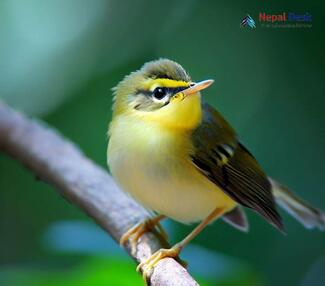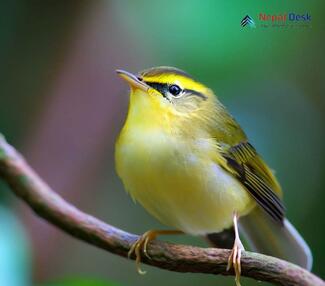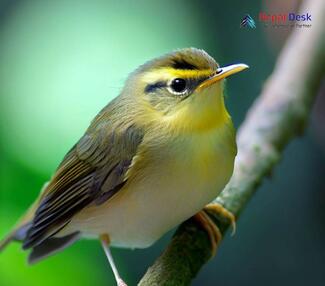The Sulphur-bellied Warbler (Phylloscopus griseolus) is an enchanting small bird that sports a stunning yellow underside. As a result, it's no wonder that bird enthusiasts are eager to spot this gem in various parts of Asia. Nepal, in particular, has become a fascinating location for researchers and observers to study this species up close. In the following article, we'll delve into the captivating features of the Sulphur-bellied Warbler, examine its habitat, and discuss its role in Nepal's environment.
Characteristics and Appearance
As an adorable tiny bird, the Sulphur-bellied Warbler measures about 10-11 cm long and weighs only 6-9 grams. Its beautiful appearance is marked by dark olive-brown upperparts contrasted with a bright sulfur-yellow belly. With unique white markings around the eyes, this facial pattern is quite unforgettable. Interestingly enough, males and females look so similar that it's tough to tell them apart just by their feathers.
Habitat and Distribution
You can find this lovely warbler throughout Asia - from the Himalayan foothills in India and Bhutan, all the way to western central China. Its range also stretches southwards, reaching countries such as Myanmar, Thailand, Laos, Vietnam, and Cambodia. In Nepal, if you're lucky enough to spot one of these charming creatures, you'll likely be visiting either the Annapurna Conservation Area or Langtang National Park.
The ideal home for Sulphur-bellied Warblers? Montane broadleaf forests with plenty of dense undergrowth. They enjoy elevations between 1,000 and 3,500 meters above sea level and can often be found near mountain streams and river valleys.
Breeding and Migration
Usually between May and July, Sulphur-bellied Warblers enter their breeding season. They skillfully craft cup-shaped nests out of grass and moss on low branches or close to the ground. Mama warblers lay 2-4 pale greenish-blue eggs that incubate for about 12-14 days before becoming baby birds.
These warblers are known for their migration patterns, which change with the seasons. They tend to breed in high-altitude regions and head to more accessible elevations during the colder months. In Nepal, you might catch sight of them during spring and autumn migrations as they journey through the land.
Conservation Status
While bird enthusiasts would love to experience this beautiful species in person, Sulphur-bellied Warblers are still relatively understudied. Fortunately, they're considered "Least Concern" on the IUCN Red List, since they have a vast range and stable population size. However, it's essential to remain aware of potential threats like habitat loss and fragmentation that could put their survival at risk.
To sum things up, the Sulphur-bellied Warbler (Phylloscopus griseolus) is a remarkable bird species with a striking appearance and an exciting presence in Nepal. By understanding its features, distribution, and role in its ecosystem, birdwatchers and conservationists can work together to protect this stunning creature for years to come.




